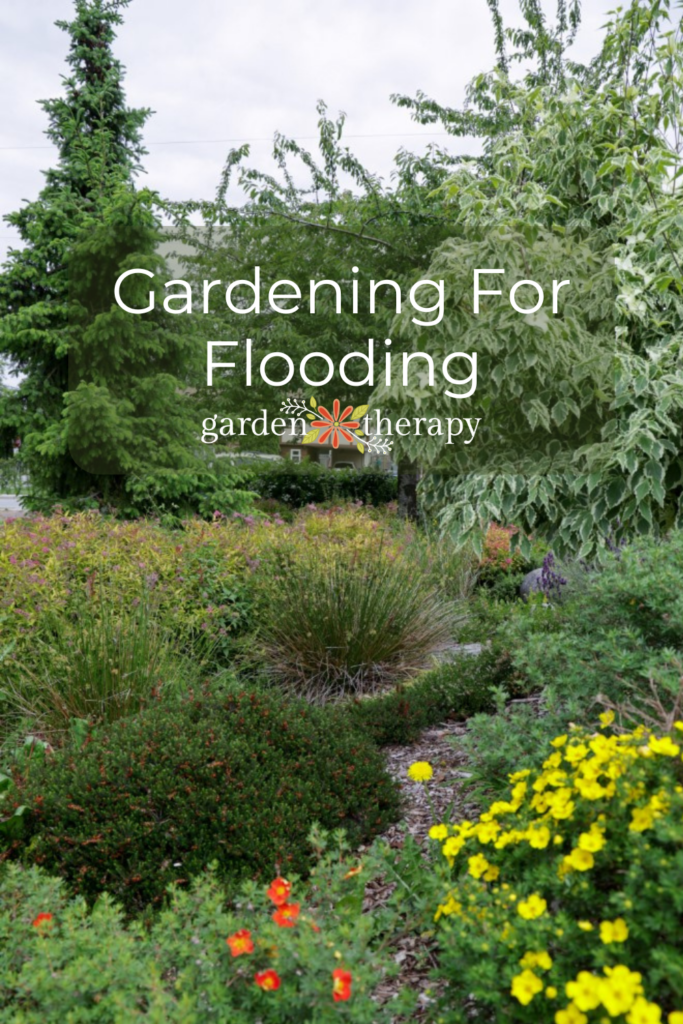These days, when it rains, it pours! Frequent and heavy rainstorms have become the norm, making our existing drainage systems overwhelmed and inefficient. Come rain or shine, let’s get your garden ready for any kind of weather Mother Nature throws at it.
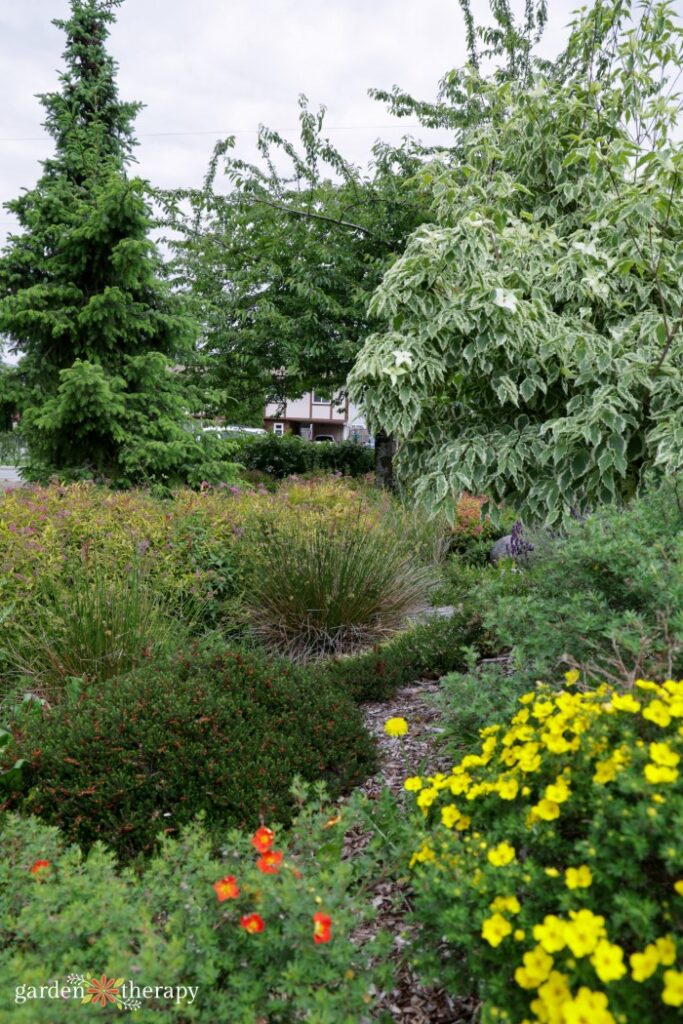
Atmospheric rivers are now part of every West Coaster’s everyday dictionary. What was once an irregular, minor kind of rainstorm is now something that we can expect a couple of times a year.
And it’s not just us on the west coast. From hurricanes to intense storms, places all over the world are experiencing increased flooding issues. It’s our new reality.
Our old infrastructure and systems for dealing with all this rain and flooding just aren’t cutting it anymore. It’s time we made a big change.
An atmospheric river hit Vancouver a month ago, and it was a big test for my new garden and drainage system. I’m happy to say that my changes made a huge difference in preventing my yard from becoming one big puddle…at least part of it. More on that later.
Through some simple design changes, your yard can become drainage heaven, all while being more ecologically friendly. Really, it’s a win-win for everyone.
Here’s what I’ll be talking about today…
The Atmospheric River Problem
About a month ago, Vancouver had a large atmospheric river. Many locations had more than a month’s worth of rain in just 48 hours. And for a place that’s known for its rain, well, you can imagine how much that was. North Vancouver saw about 350 millimetres of rain over the course of three days.
Just three years ago, we had a record-breaking atmospheric river that completely washed out parts of the highway, cutting off Vancouver from the rest of Canada and causing major flooding and damage to a large portion of the West Coast.
Atmospheric rivers are quite common. They are long and narrow concentrations of water in the sky. While they can happen anywhere in the world, they’re common along the west coast of Canada and the USA because of our mountain ranges that push the air up, allowing the water to condense and then become rainfall.
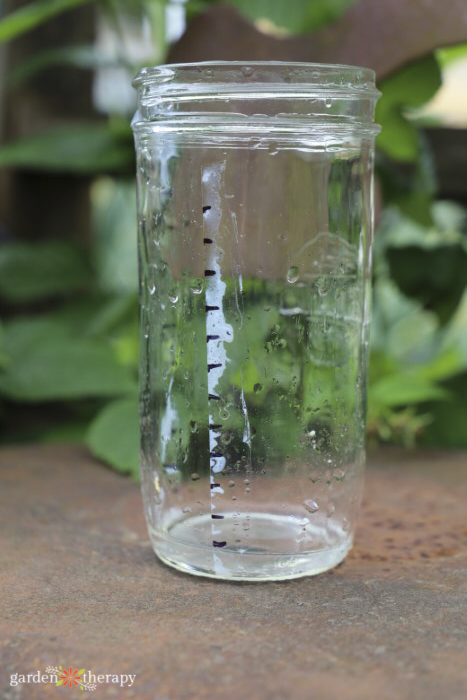
While they might be common, atmospheric rivers are often weak and just go unnoticed as regular rainstorms. This is why most of us have never heard of atmospheric rivers until recent years—because they’re getting more intense.
In just 2019, California started ranking atmospheric rivers on a scale of one to five, similar to hurricanes. While it’s not implemented in Canada yet, the record-breaking atmospheric river three years ago was called a category five. And the one this past October, a category four.
It’s no coincidence that these events are becoming more commonplace. The Canadian Climate Institute reports that the increase in rainstorms comes from warmer air as a result of climate change. The increased amount of heat-trapping gases in the atmosphere holds more moisture until it all comes down in more intense storms.
The Importance of Rain Gardens
If we didn’t have buildings, where would our rain go? It would go right into the ground, of course!
One of the best solutions for lots of rainfall is a rain garden. These are specially designed landscapes that take and absorb rainwater and then filter it.
The plants and soil will help to retain water where it belongs, but the soil will also help to remove contaminants from the roof or pollutants that would otherwise go down the drain.
Another benefit? Your gardens retain all that water, which puts them in a better position when drought strikes. Because deep down, there’s probably still plenty of moisture.
For more on how to design a rain garden, check out this post.

My Front Yard Rain Design
When I first bought my house, my front yard was in desperate need of some TLC. It was full of uneven ground and became mud puddles when the rain would hit.
Clearly, I had a drainage problem.
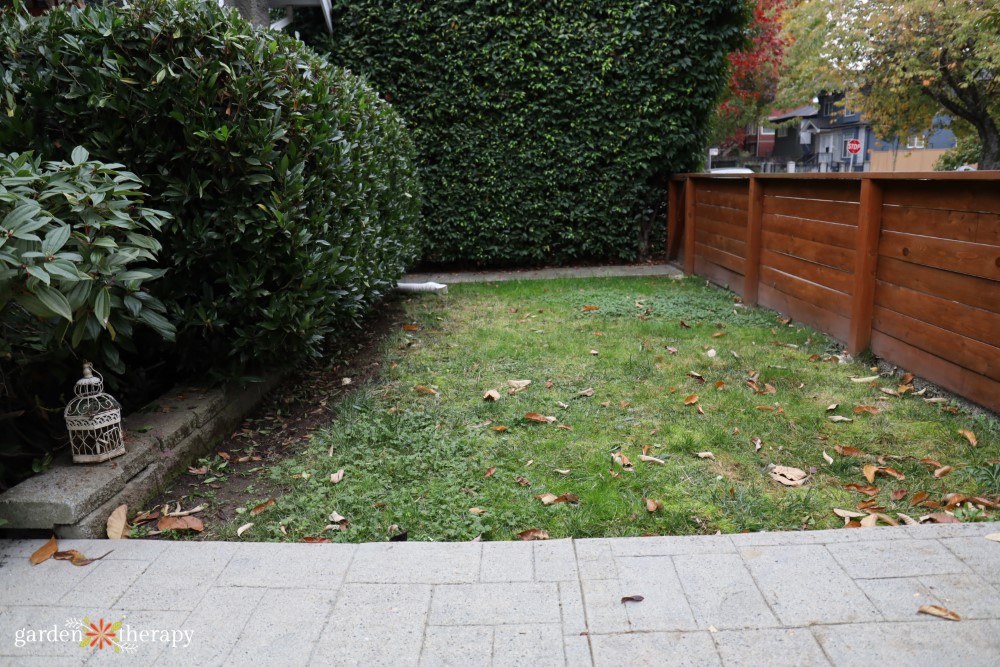
The first thing I did, which I always recommend in my talks and in my book The Regenerative Garden, was to redirect the downspouts to the yard instead. I wanted to avoid my water going into the city’s drainage system. Otherwise, that water would be gone for good, and my garden would have lost all this valuable moisture.
When we direct our gutters and spouts to the city water treatment and sewage water, that water gets pumped, processed, and sent back to us. It’s very, very wasteful.
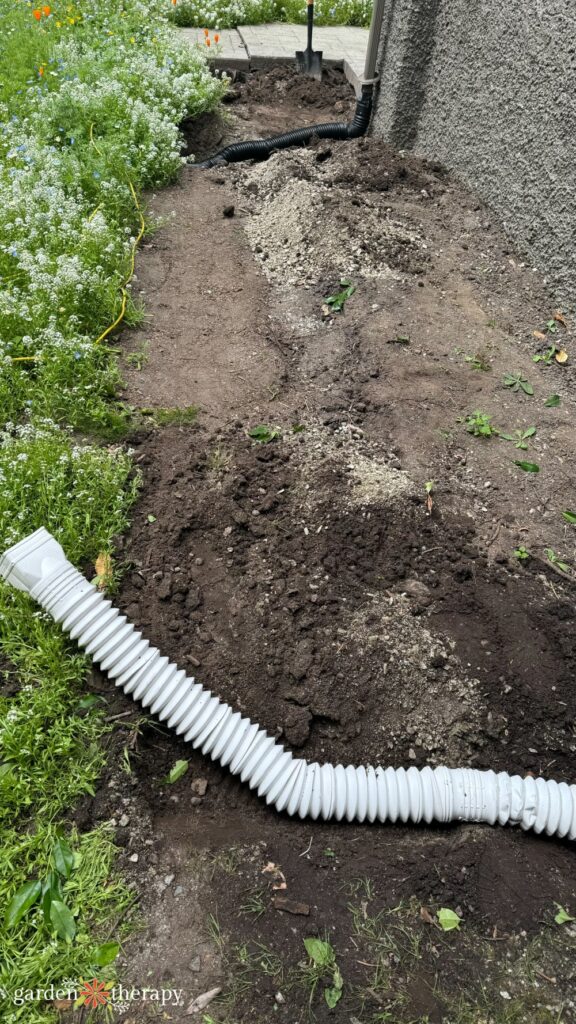
I redirected my downspouts to go to the middle of the lawn so water could pool away from the house. Then, I added a dry river that would act as a basin to hold any additional water and keep it away from the plants so they wouldn’t get waterlogged.
Last fall, I planted over 1500 spring bulbs, and then in the spring, I planted a wildflower lawn on top of it all. This meant I had plenty of plants and root systems to help absorb and filter the water.
In the summer, I didn’t have to water my wildflower lawn once. It was extremely drought tolerant, and honestly was the talk of the block with how beautiful it was.
So, I crossed my fingers and hoped that the wildflowers, bulbs, and the dry river would act as useful rain garden this rainy season.

How Did My Rain Design Hold Up?
When the atmospheric river hit, only my front yard had finished its renovation. The backyard was still incomplete and definitely not prepared for so much rain. The lawn was flooded, and some of it was coming into the basement because there was just so much water.
My drain tiles weren’t failing, there was just so much extra water overflowing from my neighbour’s house and mine, that the water table became really high. Essentially, my backyard had turned into a pond.
But in my front yard, I actually had really wonderful drainage because there were so many roots from the wildflowers and the bulbs. It broke up the soil, and the gutters weren’t pooling water beside the house.
I even checked under the front porch with a flashlight to see if any moisture was coming in from the front walls, and it wasn’t!
My system passed about as strict a test as you can get. It went from a struggling lawn and mud pit to a beautiful wildflower lawn that was as functional as it was beautiful. They work as a really great solution for drought in the summer and heavy rains in the winter months.
I’m really excited about the design because it works really well as a climate change garden. Keeping as much water where it falls as possible reduces waste.

Updating Our Cities’ Infrastructure
It’s clear that Vancouver needs to completely rethink its rainwater management. One of its most recent solutions is to install rainwater detention tanks, which sit below the ground and temporarily hold rainwater and slowly release it into the sewer system.
But still, this is draining the water to go somewhere else besides where it was meant to fall. Even this UBC professor thinks that making rain gardens is a good solution for the city.
This is something already happening in Seattle. In collaboration with the King County and the Seattle Rain Wise Program, they are implementing Green Stormwater Infrastructure.
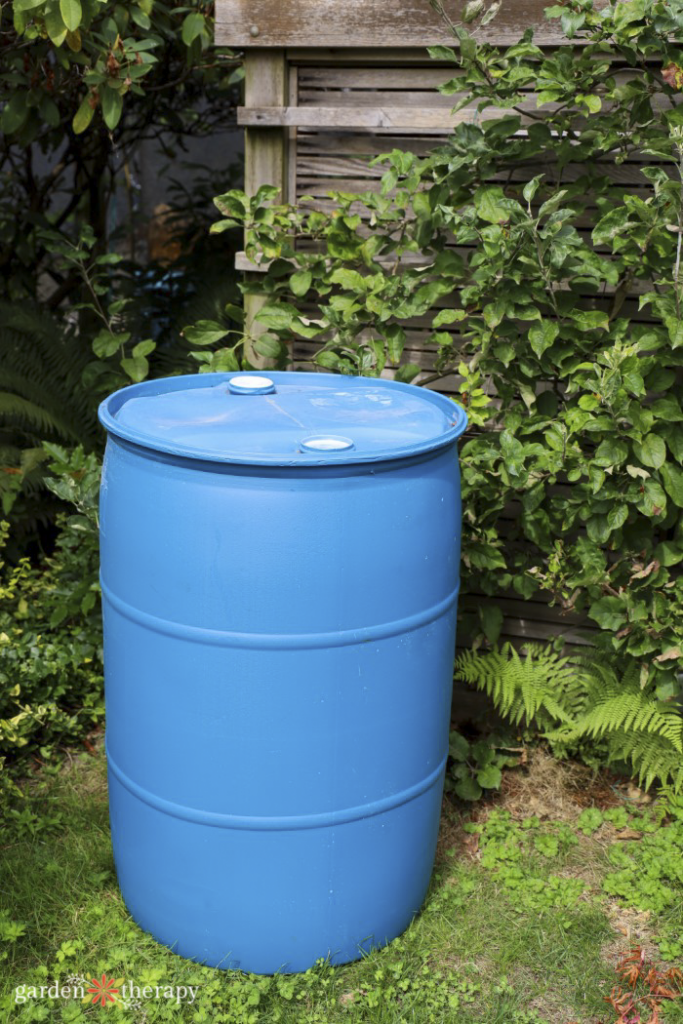
Rather than take all that stormwater and run it directly into the ocean, they’re finding more ways to take the storm water and return it to the ground.
Primarily, they’re using rain gardens, a combination of plants, trees, soil, and smart engineering to capture, slow down, and clean storm runoff.
In the Surrey and Delta area, the Cougar Creek Streamkeepers are also doing amazing work. Made up entirely of volunteers, they’re dedicated to protecting the health of Cougar Creek, a salmon stream in the area.
They help create rain gardens to reduce stormwater damage to the creek and provide ample education on the importance of returning this water to the land. The more we return water to where it comes from, the more we’re maintaining the ecology.
If our water, from say Surrey or Delta, gets removed and piped out to the ocean, it doesn’t go into Cougar Creek, and then the salmon don’t get enough of a habitat.
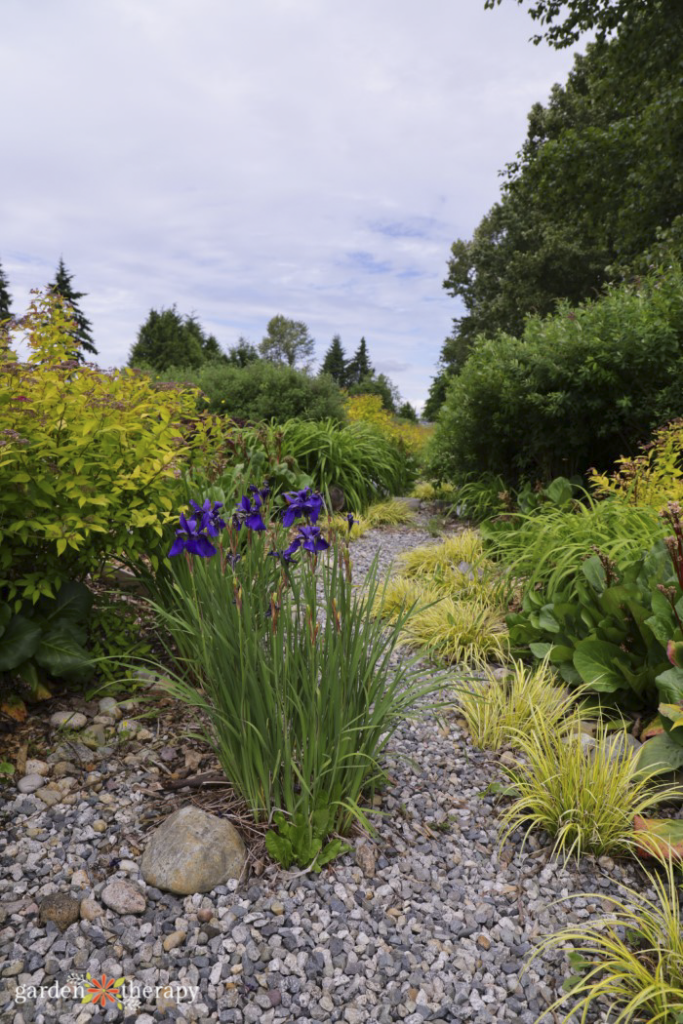
Just imagine how beneficial it would be if every house had a rain garden, a rain barrel, or a water cistern. We would reduce so much water waste, make our backyards more ecologically friendly, and help ourselves come drought season.
More Ways to be Rain Smart

